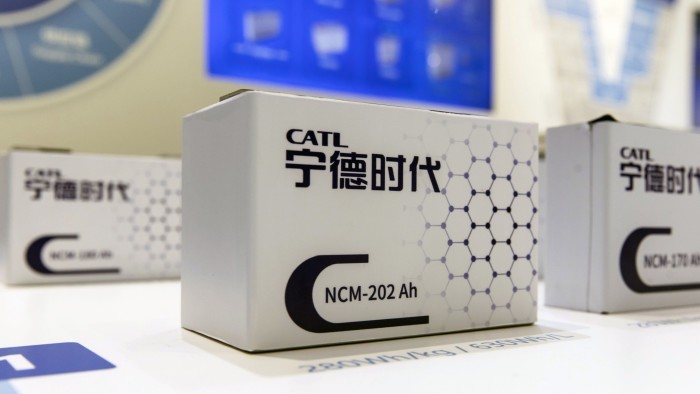This article is an on-site version of our Energy Source newsletter. Premium subscribers can sign up here to get the newsletter delivered every Tuesday and Thursday. Standard subscribers can upgrade to Premium here, or explore all FT newsletters
Welcome to Energy Source, coming to you today from a sweltering London, where a giant heatwave has descended on the city.
It’s been a hot news cycle as well, as the energy industry digests the news that Shell will not be bidding for BP — at least not before Christmas.
Meanwhile, a fragile truce remains in place in the Middle East, where hostilities between Israel and Iran seem to be on hold for now.
If you’d like to test your knowledge of how the oil market responded to previous Middle East crises, try your hand at the FT’s interactive “Draw your own chart” game. It’s harder than you think.
And in today’s Energy Source, my colleague Camilla Hodgson takes a look at the future of sodium-ion batteries — a potential rival to lithium-ion batteries — and whether they might be overhyped.
Thanks for reading, Leslie
Sodium battery hype doesn’t match reality, says new report
Demand for a new battery technology using sodium ions will grow slower than Chinese electric-vehicle battery maker CATL expects, with hype outpacing real-world deployment, according to new analysis.
The findings by research group Benchmark Mineral Intelligence, shared exclusively with the FT, found that forecasts by CATL about the growth of sodium-ion batteries were unrealistic.
The research finds that sodium-ion batteries, which make up less than 1 per cent of the global battery market today, will represent about 3 per cent of batteries in a decade in a base case scenario, and as much as 15.5 per cent in an “early adoption” scenario.
Sodium-ion batteries — which are made using sodium salt — are seen as a cheaper alternative to lithium-based batteries, and work better at very high and low temperatures. They have started to be used in some large, stationary energy storage systems, as well as in electric scooters in China.
However, they are typically less energy-dense relative to their size, which has held back their use in EVs, and have become less cost-competitive since the slump in lithium prices.
Demand was still “relatively small” for what was a “nascent technology”, said Benchmark.
In April, CATL launched a new range of sodium-ion batteries, which will start mass production by the end of the year. Founder and chief executive Robin Zeng has said he believes sodium-ion batteries could replace up to half of the market for lithium-iron phosphate batteries.
But Benchmark said on Tuesday that was unrealistic. Although sodium-ion batteries “have a place in the energy transition”, the technology was “not ready to go mass-market and the current positive sentiment is driven by hype”.
According to Benchmark, Zeng’s forecast would represent about 1.8 terawatt hours of sodium-ion batteries deployed by 2035. That would require “an immediate breakthrough” in the technology’s performance and cost, and a rise in lithium prices, it said.
By contrast, Benchmark’s most optimistic scenario is for demand to reach about 946 gigawatt hours by 2035, or just under 1 TWh, an estimate that also assumed rising lithium prices among other things.

CATL and Chinese carmaker BYD are among the biggest manufacturers of sodium-ion batteries.
Fluctuating commodity prices have encouraged innovations in battery technology. Although lithium-iron phosphate batteries remain the dominant option, a range of alternatives, including sodium-ion and solid-state batteries, are also in development.
Sodium-ion supply chains need to scale up to bring down costs, and the technology should be directed into areas where it could “differentiate itself now that price isn’t compensating for weaker performance”, said Connor Watts, an analyst at price reporting agency Fastmarkets.
That would include the energy storage market, where they would not be competing directly with lithium-based batteries on price.
“Sodium’s continued improvement is inevitable, but it will take another few generational improvements before western consumers can be convinced to switch over,” said Watts. (Camilla Hodgson)
Power Points
Energy Source is written and edited by Jamie Smyth, Martha Muir, Alexandra White, Kristina Shevory, Tom Wilson and Malcolm Moore, with support from the FT’s global team of reporters. Reach us at energy.source@ft.com and follow us on X at @FTEnergy. Catch up on past editions of the newsletter here.
Recommended newsletters for you
Moral Money — Our unmissable newsletter on socially responsible business, sustainable finance and more. Sign up here
The Climate Graphic: Explained — Understanding the most important climate data of the week. Sign up here
https://www.ft.com/content/76cce65f-b0f1-4334-b151-0e12dd37aaa6


